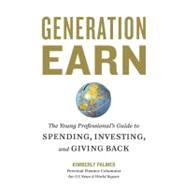
| Acknowledgements | p. ix |
| Introduction: Meet the New Young Professional | p. 1 |
| Building Your Life | |
| The Joy of Spending | p. 9 |
| Job Juggling | p. 29 |
| The Upside of Debt | p. 47 |
| Investing for Smarties | p. 61 |
| Not Your Parents' Retirement | p. 75 |
| Creating A Home | |
| When Parents Are Landlords (or Tenants) | p. 91 |
| Lessons in Modern Frugality | p. 105 |
| Love, Rings, and Mortgages | p. 119 |
| Babies and Bank Accounts | p. 139 |
| Changing The World | |
| Green Spending | p. 165 |
| The New Rules of Philanthropy | p. 181 |
| Nonprofit Dreamin' | p. 195 |
| Epilogue: Redefining Rich | p. 209 |
| Endnotes | p. 216 |
| About the Author | p. 224 |
| Index | p. 225 |
| Table of Contents provided by Ingram. All Rights Reserved. |
The New copy of this book will include any supplemental materials advertised. Please check the title of the book to determine if it should include any access cards, study guides, lab manuals, CDs, etc.
The Used, Rental and eBook copies of this book are not guaranteed to include any supplemental materials. Typically, only the book itself is included. This is true even if the title states it includes any access cards, study guides, lab manuals, CDs, etc.